Discover Incredible Places in Khajuraho
Explore our handpicked collection of breathtaking destinations across India

Western Group of Temples
The Western Group of Temples in Khajuraho is the most renowned and visited of all the temple groups. It showcases some of the finest examples of Chandela art and architecture. These temples are famous for their intricate sculptures, depicting various aspects of life, including deities, warriors, dancers, and, most famously, erotic scenes. The temples are primarily dedicated to Lord Shiva and Lord Vishnu, with some dedicated to Jain Tirthankaras. The sheer artistry and craftsmanship displayed in these structures are breathtaking, making it a must-see for any visitor to Khajuraho. The complex is well-maintained and offers a glimpse into the rich cultural heritage of India.
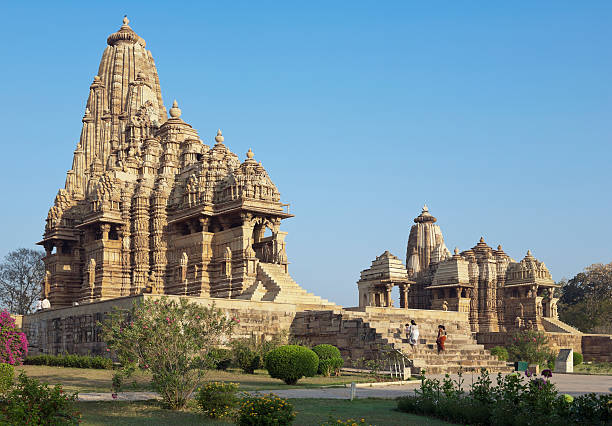
Kandariya Mahadeva Temple
The Kandariya Mahadeva Temple is the largest and most ornate Hindu temple in the Khajuraho complex, renowned for its intricate sculptures and impressive architecture. Dedicated to Lord Shiva, it stands as a masterpiece of medieval Indian art and a testament to the Chandela dynasty's patronage of the arts. The temple's towering shikhara (spire) symbolizes Mount Kailash, Shiva's abode. Visitors are captivated by the detailed carvings depicting deities, celestial beings, and scenes from everyday life, including the famous erotic sculptures that showcase the tantric beliefs prevalent during that era. The temple's grandeur and artistic excellence make it a must-see destination for art lovers, history buffs, and spiritual seekers alike.
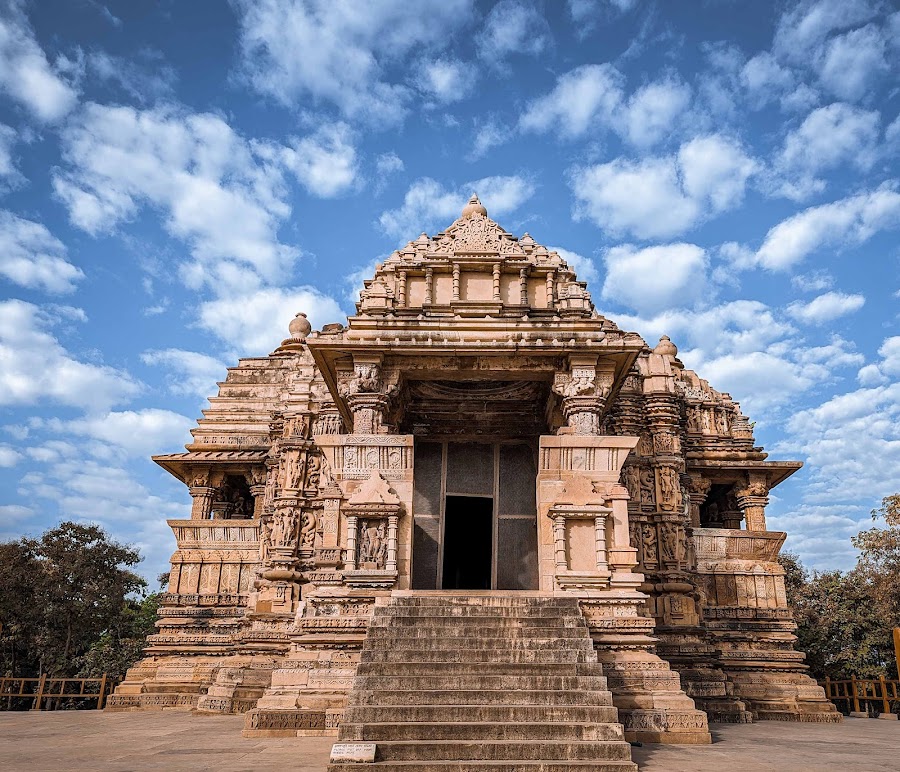
Devi Jagadambi Temple
The Devi Jagadambi Temple in Khajuraho is renowned for its exquisite sculptures and intricate carvings, particularly those depicting amorous couples and divine figures. Dedicated to Goddess Parvati, initially Vishnu, the temple stands out for its refined architecture and the sandstone used in its construction. The temple is part of the Western Group of Temples and offers a captivating glimpse into the artistic and religious traditions of the Chandela dynasty. The sanctum houses a striking image of Goddess Jagadambi, adding to the temple's spiritual significance. Its well-preserved state and detailed artwork make it a must-visit for history enthusiasts and art lovers.
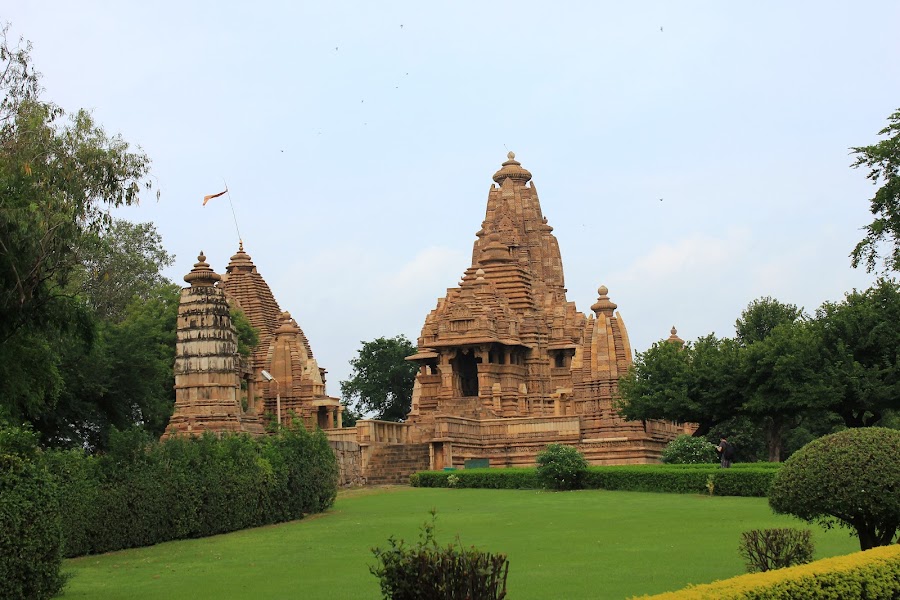
Vishvanatha Temple
The Vishvanatha Temple in Khajuraho is a magnificent example of Chandela architecture, dedicated to Lord Shiva. It's renowned for its intricate carvings, depicting deities, celestial beings, and scenes from daily life. The temple follows the typical Khajuraho style with a soaring shikhara (spire) and multiple subsidiary shrines. The sculptures are incredibly detailed and expressive, showcasing the artistic prowess of the artisans. The temple complex also features well-maintained lawns and gardens, providing a serene atmosphere for visitors to appreciate the architectural marvel and spiritual significance of the site. Don't miss the impressive Nandi bull statue facing the main shrine.
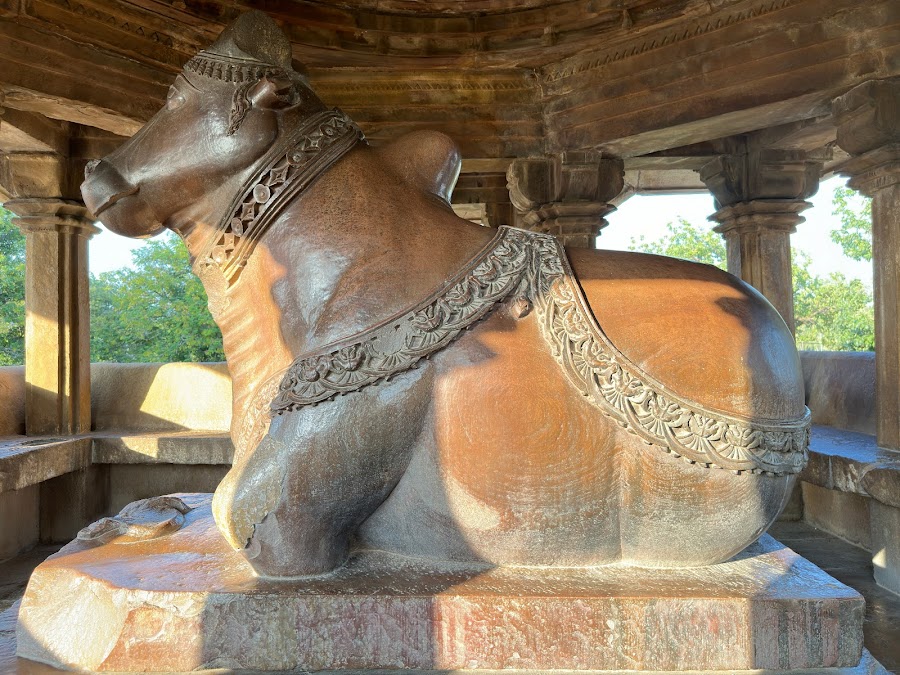
Nandi Temple
The Nandi Temple in Khajuraho is dedicated to Nandi, the sacred bull and mount of Lord Shiva. It stands directly opposite the Kandariya Mahadeva Temple, emphasizing its importance as a guardian and devotee. The temple houses a massive, exquisitely carved Nandi statue made of a single stone. The sculpture is renowned for its lifelike features, smooth finish, and serene expression. The temple's open pavilion design allows for unobstructed views of the Kandariya Mahadeva Temple, creating a visually stunning spectacle. The Nandi Temple is a testament to the architectural brilliance and religious devotion of the Chandela dynasty. Its simple yet elegant structure perfectly complements the grandeur of the adjacent Shiva temple, making it an integral part of the Khajuraho experience.
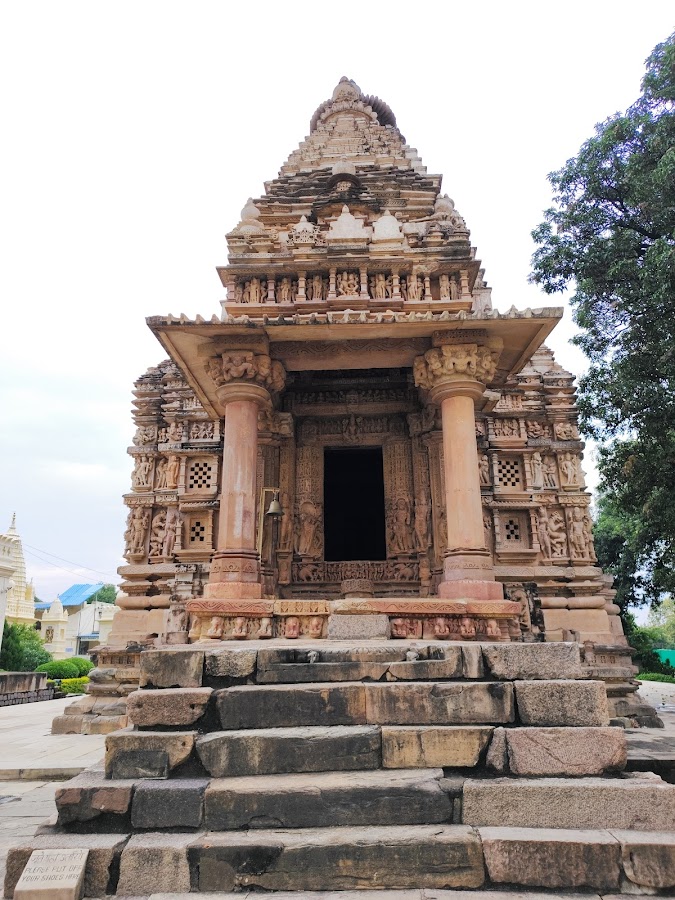
Parshvanatha Temple
The Parshvanatha Temple is the largest and most ornate Jain temple within the Khajuraho complex, dedicated to Parshvanatha, the 23rd Tirthankara. It stands out for its intricate carvings, showcasing not only Jain deities but also secular scenes of daily life, dancers, musicians, and amorous couples. The temple's architecture is a beautiful blend of the Nagara style with unique Jain influences. Though originally a Jain temple, it also features Vaishnavite deities, indicating a period of religious harmony. The temple's well-preserved state and artistic details make it a must-visit for art enthusiasts and those interested in Jain heritage.

Lakshmana Temple
The Lakshmana Temple is one of the best-preserved and earliest of the Khajuraho temples, dedicated to Lord Vishnu. Its intricate carvings and elaborate sculptures showcase the Chandela dynasty's artistic prowess. The temple's sandstone structure features a high platform (jagati) and four subsidiary shrines, making it a Pancharatna-style temple. The three-headed idol of Vishnu's incarnations adds to the temple's allure. Explore the detailed friezes depicting scenes from daily life, mythology, and erotic art, providing a glimpse into the cultural and religious beliefs of the time. It is a must-visit for art lovers and history enthusiasts.
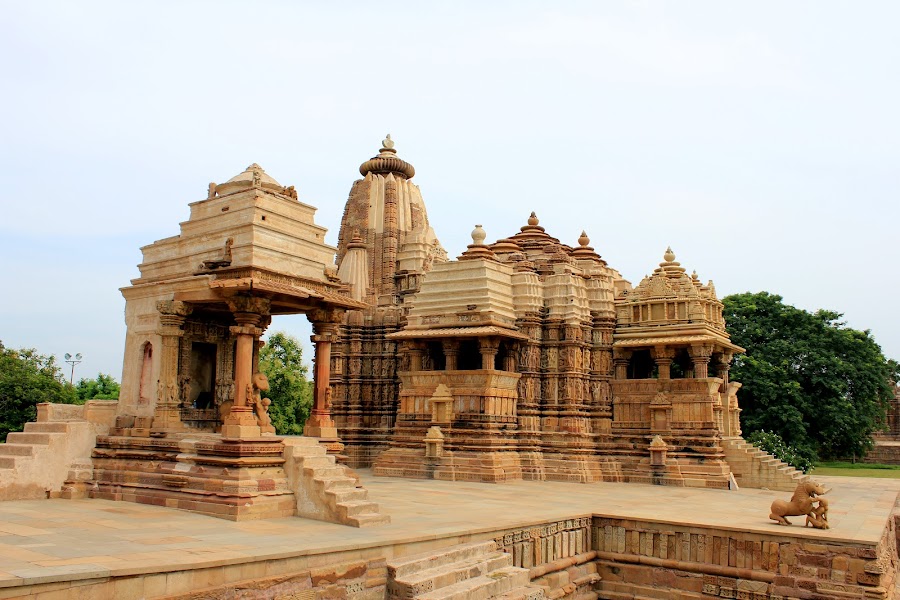
Chitragupta Temple
The Chitragupta Temple, dedicated to the Sun God Surya, is a prominent temple in the Khajuraho Group of Monuments. It stands out for its impressive architecture and intricate carvings. The temple's exterior is adorned with sculptures depicting various aspects of life, including processions, hunting scenes, and celestial beings. The sanctum houses a striking image of Surya riding a chariot drawn by seven horses. The temple's design reflects the Nagara style of architecture, characterized by its towering shikhara (spire) and elaborate ornamentation. It's a must-visit for those interested in Hindu mythology and ancient Indian art.
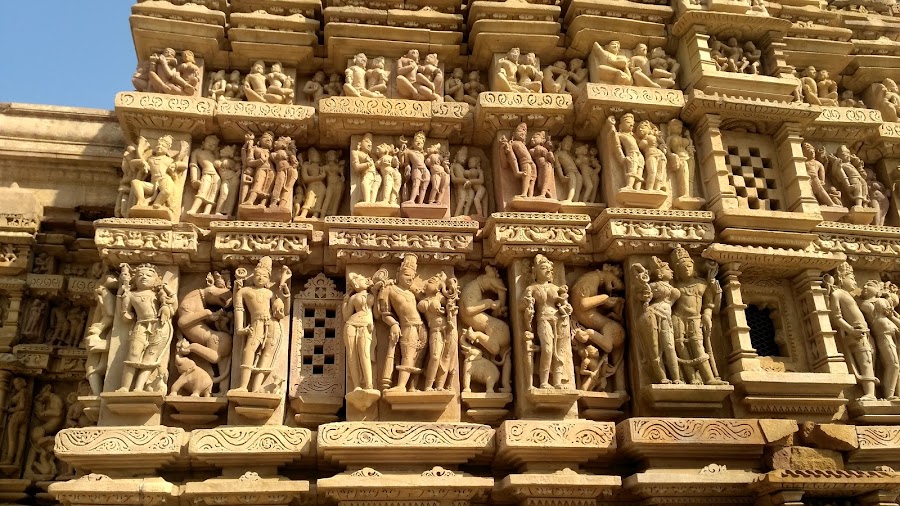
Shantinatha Temple
The Shantinatha Temple in Khajuraho is a significant Jain temple renowned for its intricate carvings and serene atmosphere. Dedicated to Lord Shantinatha, the 16th Jain Tirthankara, the temple showcases a blend of architectural styles. The outer walls are adorned with sculptures depicting various deities, celestial beings, and scenes from Jain mythology. Inside, a large idol of Lord Shantinatha dominates the sanctum. The temple complex also houses smaller shrines dedicated to other Jain figures. Its peaceful ambiance and artistic beauty make it a must-visit for those seeking spiritual solace and an appreciation for Jain art and architecture. Photography is usually allowed, enabling visitors to capture the temple's exquisite details. Remember to dress respectfully when visiting.